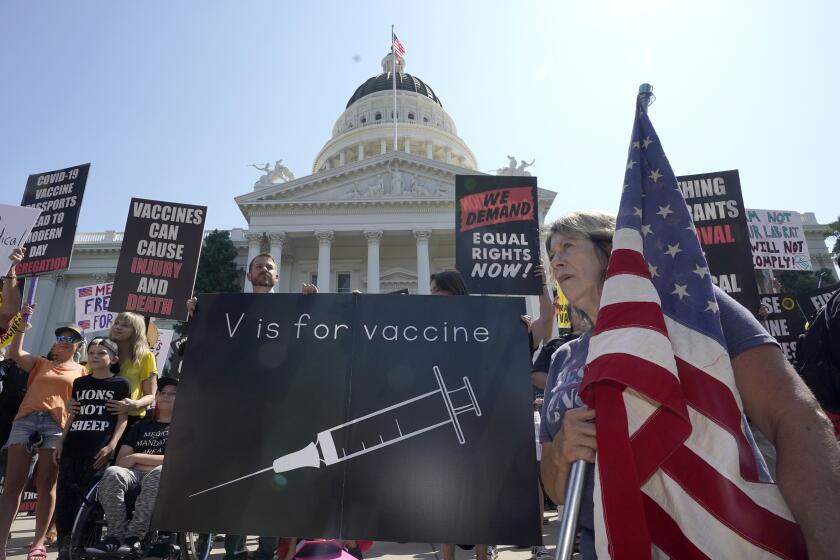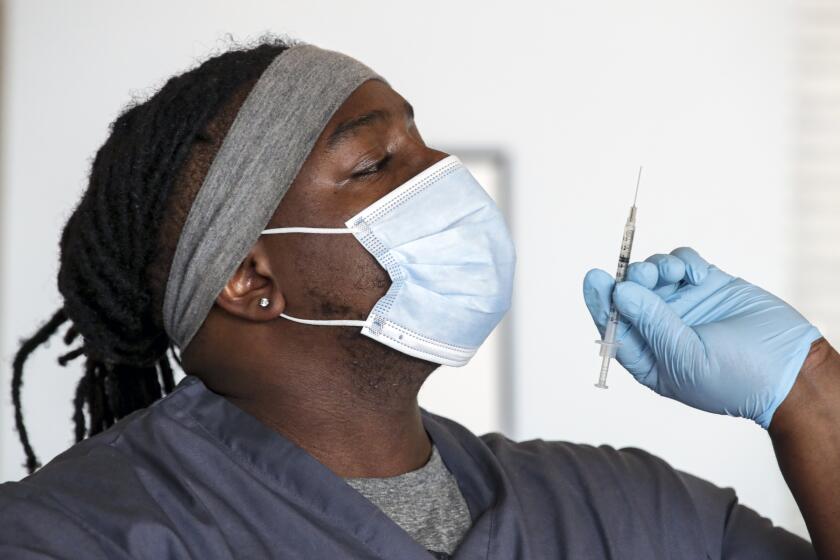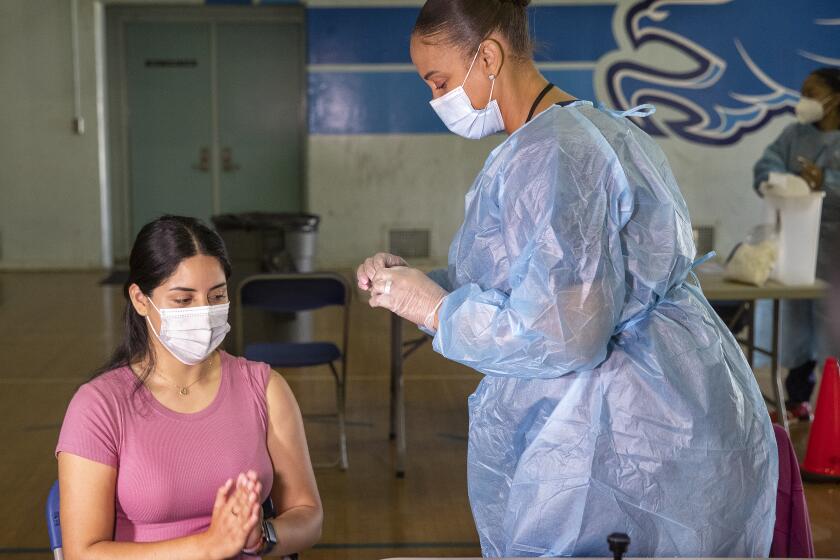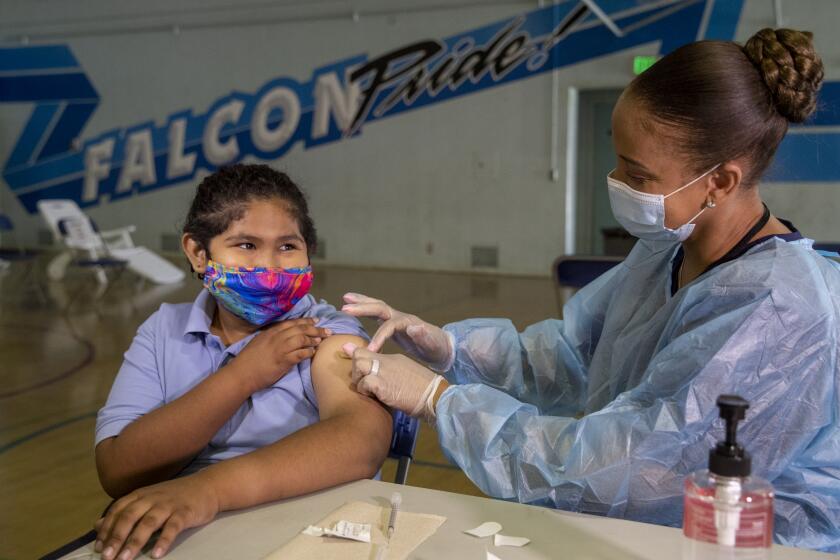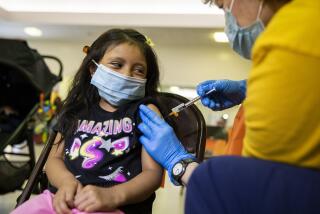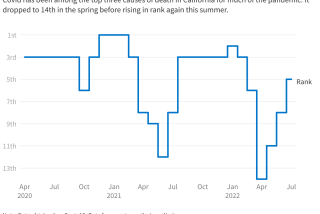Younger unvaccinated Californians increasingly hospitalized with COVID-19
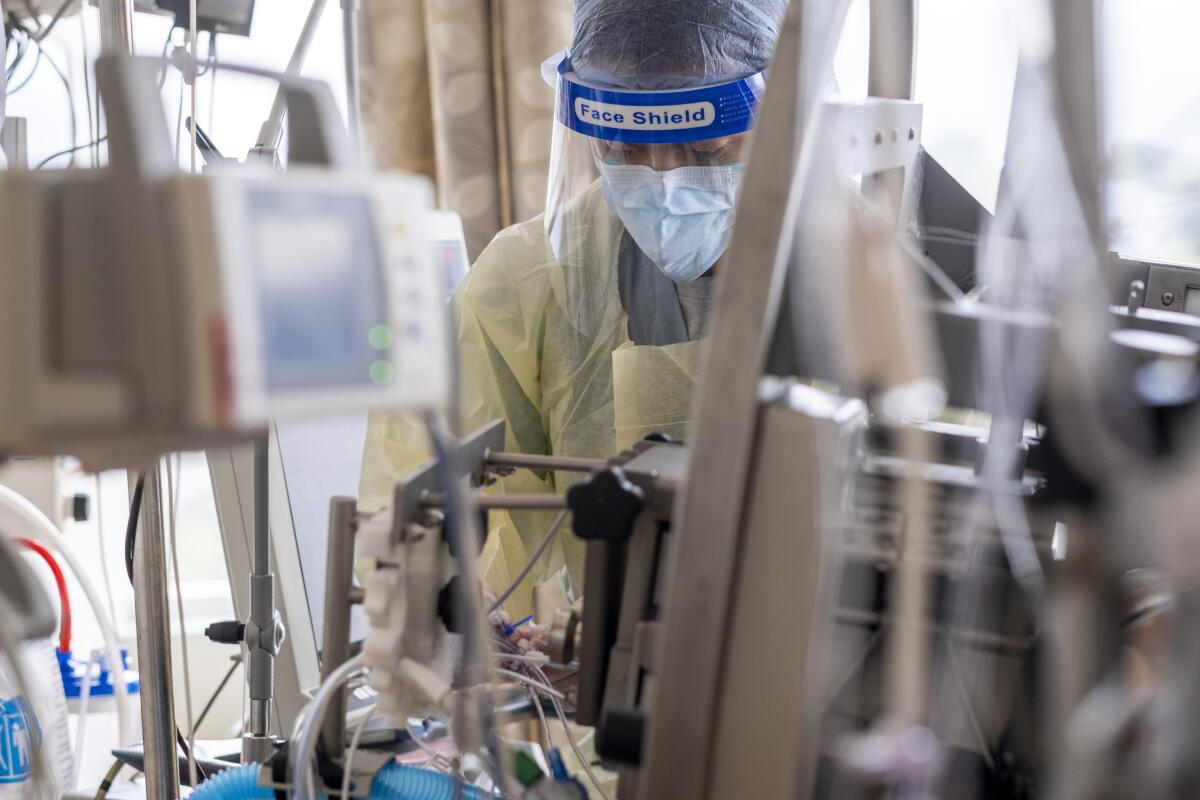
- Share via
As the Delta variant brought another wave of COVID-19 infections this summer, the age of those being hospitalized with the illness has dropped significantly in some parts of California compared to earlier surges.
That’s because younger people are being vaccinated at lower rates.
This age gap is causing growing concern among healthcare professionals and bringing new calls to get younger people vaccinated.
Lawmakers behind the proposals say mandates would improve vaccination rates and help lessen the effects of variants spreading through California.
Here is a what we know:
Younger people in hospitals
Los Angeles County has reported a greater number of unvaccinated people who are younger and otherwise healthier filling hospital beds.
Among adults and the oldest teenagers who were hospitalized with COVID-19 from May 1 to Aug. 18, the median age of unvaccinated or partially vaccinated patients was 51, according to data presented at a briefing in late August. That’s notably younger than the median age of fully vaccinated patients in the hospital with COVID-19, which was 66.
Fully vaccinated people also were less likely to need admission into the intensive care unit or to have such difficulty breathing that they need to be sedated and have a breathing tube inserted.
At Fountain Valley Regional Hospital in Orange County, the average age of people admitted for hospital treatment in January was 64. Now it’s 46, Dr. Timothy Korber, the hospital’s medical director of emergency services, said recently.
Dr. Rais Vohra, Fresno County’s interim health officer, said people are “in so much danger if you’re not vaccinated right now.”
“We really are seeing just many, many people that are unvaccinated — young people, in their 20s, 30s and 40s — that are landing in the hospitals right now,” Vohra said. “That could be you. That could be someone that you love, someone that you know.”
In Orange County, “the overall pattern is that it’s the 30-, 40-, 50-year-olds who are getting hospitalized, compared to previous surges when it’s really been 65 and over,” Dr. Regina Chinsio-Kwong, a deputy health officer, said at a briefing last week.
“If we don’t take care of this pandemic and get people vaccinated soon enough, the unvaccinated will basically allow a new variant [to emerge] that’s even more dangerous,” Vohra added.
COVID-19 vaccination rates are significantly lower among L.A. County’s younger Black and Latino residents than for other racial and ethnic groups.
Some success stories
Some areas and demographic groups that were hit hard earlier in the pandemic by severe disease are now reporting higher vaccination rates, in part because of successful, culturally competent public health strategies.
For example, Native Americans now have a higher vaccination rate than any other major racial or ethnic group. Imperial County, an impoverished, largely agricultural county on the Mexican border, has one of California’s highest vaccination rates.
Across the state, rates of vaccinations among Black and Latino residents have generally lagged behind white and Asian Americans. But in San Francisco and Santa Clara counties, rates of vaccinations among Black and Latino residents are now essentially at least equal to those of white residents.
There hasn’t been an uptick in inoculations, nationally or in California, after the FDA’s full approval of the Pfizer vaccine for people 16 and older.
Vaccination numbers
California reported an increase in vaccinations when Delta hit. But that bump has since faded.
There was a 6.5% decline in weekly vaccinations in California; from Aug. 16 through Aug. 22, about 326,000 first-dose vaccinations were administered, but the following week, about 305,000 were given.
There were 75,526 first-dose administrations in L.A. County between Aug. 16 and Aug. 22, and 68,332 the following week. Health officials say that more recent data can sometimes appear artificially low, as it takes time to account for all doses given on a particular day.
Santa Clara County, Northern California’s most populous, reported 9,310 first-dose vaccinations in the week before the Food and Drug Administration’s announcement, and 8,515 first doses for the seven-day period after.
L.A. Times data show coronavirus cases slowing in the state, led by improvements in Southern California and the Bay Area, but more rural areas continue to struggle.
The challenges ahead
A recent Kaiser Family Foundation survey found that while 67% of surveyed U.S. adults said they were vaccinated, and 3% said they’d get vaccinated as soon as they can, about 30% said they were unvaccinated.
Of all surveyed adults, 14% said they will definitely not get the shot, while 10% said they wanted to “wait and see” how the vaccines work for other people, and 3% said they would get vaccinated only if required for work or school.
“Younger adults (18-29 years old), Republicans, rural residents and the uninsured still report lower rates of vaccine uptake than other demographic groups,” the survey said.
One reason for the persistent gap, the survey found, is that unvaccinated adults “are more likely to say they are not worried they personally will get seriously sick from the coronavirus and to believe that getting the vaccine is a bigger risk to their own health than getting the virus,” while 88% of vaccinated adults say that a coronavirus infection is a bigger risk than getting the vaccine.
Most unvaccinated adults responding to the survey said they think the news media exaggerated the seriousness of COVID-19, while most vaccinated adults said the news media was either correct or underestimated the seriousness of the pandemic.
More to Read
Sign up for Essential California
The most important California stories and recommendations in your inbox every morning.
You may occasionally receive promotional content from the Los Angeles Times.
